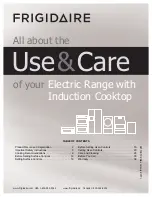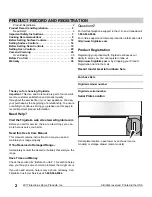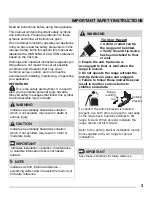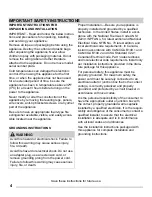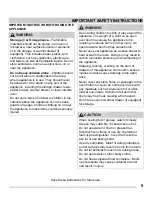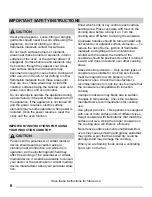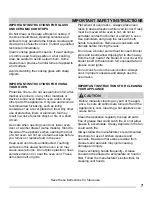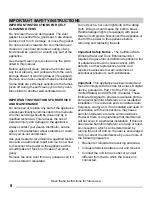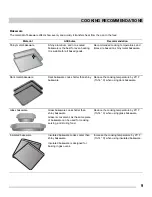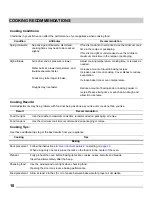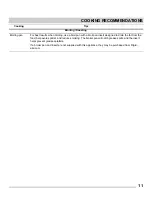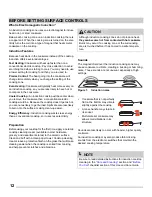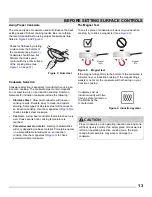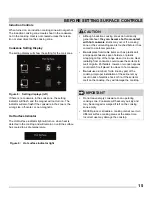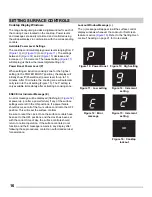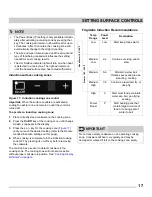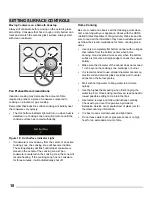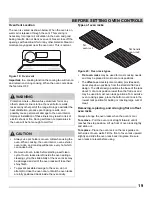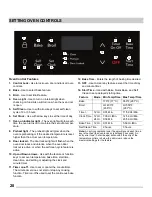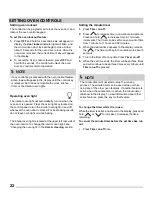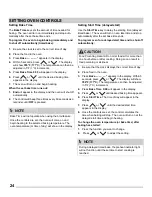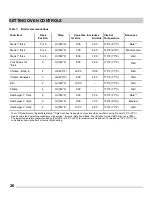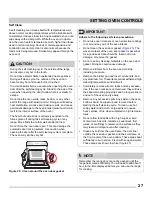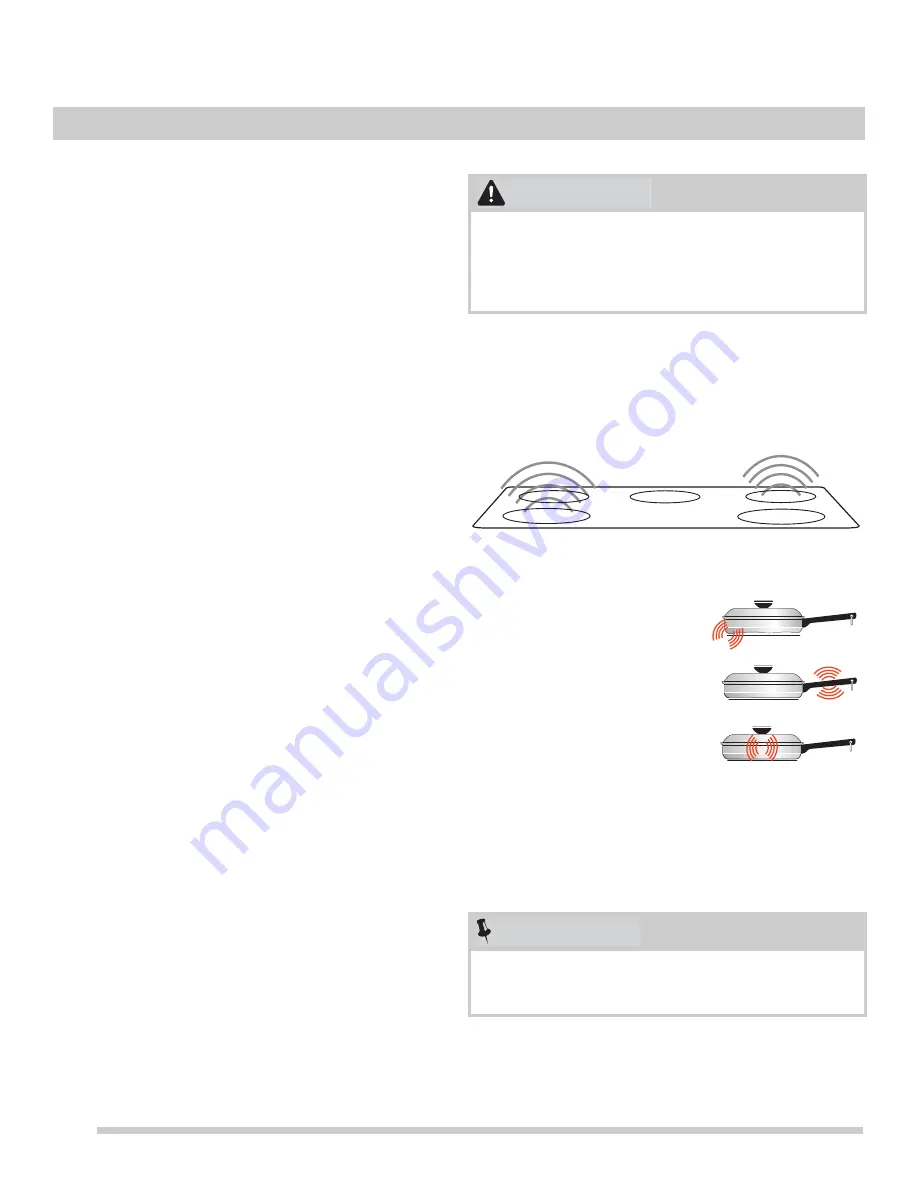
12
What is Electromagnetic Induction?
An induction cooking zone uses an electromagnet to induce
heat in iron or steel cookware.
Below each cooking zone on an induction cooktop, there is
a copper coil. When the cooking zone is turned on, the elec-
tricity turns the coil into a type of magnet that heats metal
cookware on the cooktop.
Induction Features
Because heat starts in the cookware instead of the cooktop,
induction offers several advantages.
Fast Heating:
Cookware will heat up faster than on a
conventional electric cooktop. Pay close attention to avoid
scorching food when starting to cook. You may need to use
a lower setting for cooking food than you are used to.
Precise Control:
The heat going into the cookware will
change immediately when you change the setting of the
cooking zone.
Even Heating:
Cookware will typically heat more evenly on
an induction cooktop, so you are less likely to have hot or
cool spots in the cookware.
Cooler Cooktop:
An induction cooktop will be cooler when
you remove the cookware than a conventional electric
cooktop would be. Because the cooktop doesn’t get as hot,
you are not as likely to get burned. Spills are also less likely
to burn onto the surface, making clean-up easier.
Energy Efficiency:
Induction cooking wastes less energy
than a conventional cooktop, so it uses less electricity.
Preparation
Before using your cooktop for the first time, apply a ceramic
cooktop cleaning cream (available in most hardware,
grocery, and department stores) to the ceramic surface.
Clean and buff with a clean paper towel. Cooktop cleaning
creams leave a protective finish on the glass that will make
cleaning easier when the cooktop is soiled from cooking
and help prevent scratches and abrasions.
Sounds
The magnetic field over the induction cooking zone may
cause cookware to vibrate, creating a buzzing or humming
noise. These sounds are not unusual, especially at high
settings.
Figure 1:
Induction noise
Sounds are less likely to occur with heavier, higher quality
cookware.
An induction cooktop may also produce faint clicking
sounds from the electronic switches that maintain the
desired cooking temperature.
Although induction cooking zones do not produce heat,
they can become hot from contact with hot cookware
.
Burns may occur if a cooking zone or the surrounding
area is touched before it has cooled to a safe tempera-
ture.
•
Cookware that is not perfectly
flat on the bottom may vibrate
slightly against the cooktop.
•
A loose handle may vibrate in
its socket.
•
Multi-material cookware may
allow small vibrations in its
structure.
Be sure to read detailed instructions for induction cooktop
cleaning in the
section and
checklist section of this
Use and Care Guide
.
CAUTION
NOTE
BEFORE SETTING SURFACE CONTROLS
Summary of Contents for FGIC3066TB
Page 39: ......

